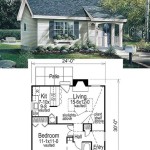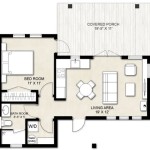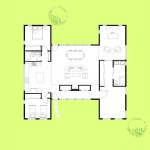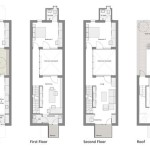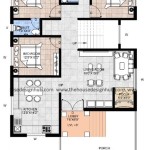House plans, also known as blueprints, are detailed drawings that depict the architectural design and layout of a house. They include floor plans, elevations, sections, and details, and are essential for obtaining building permits, communicating with contractors, and visualizing the finished structure. House plans serve as a roadmap for builders to construct or renovate a home according to specific design specifications.
Several professionals are involved in the creation of house plans. Architects are licensed professionals who have extensive training in design and construction. They can develop original house plans based on client requirements, considering factors such as budget, lifestyle, and site conditions. Architectural designers, while not licensed, also have expertise in design but may have less formal education than architects. Draftspersons, often working under the supervision of architects or designers, create technical drawings based on design concepts, ensuring accuracy and consistency throughout the house plans.
The choice of who to engage for house plans depends on factors such as the complexity of the project, budget, and local regulations. Architects are the best option for complex designs or large-scale projects, while architectural designers or draftspersons may suffice for smaller or more straightforward renovations. It is essential to research and carefully evaluate the experience, qualifications, and communication skills of any professional before entrusting them with the task of drawing house plans.
When considering who to engage for drawing house plans, several key points to keep in mind include:
- Architects: Licensed professionals with extensive design and construction training.
- Architectural designers: Expertise in design, typically with less formal education than architects.
- Draftspersons: Create technical drawings based on design concepts, ensuring accuracy.
- Complexity of project: Architects recommended for complex or large-scale designs.
- Budget: Architectural designers or draftspersons may be more cost-effective for smaller projects.
- Local regulations: May require involvement of licensed architects for certain types of projects.
- Experience: Consider the professional’s track record and experience in similar projects.
- Qualifications: Ensure the professional holds relevant licenses or certifications.
- Communication skills: Effective communication is crucial for successful collaboration.
Thoroughly evaluating these points can help you make an informed decision when selecting a professional to draw your house plans.
Architects: Licensed professionals with extensive design and construction training.
Architects are licensed professionals who undergo rigorous training in design and construction principles. They possess a deep understanding of building codes, materials, and construction practices, ensuring that the house plans they create are not only aesthetically pleasing but also structurally sound and compliant with regulations.
- Education and training: Architects typically complete a bachelor’s or master’s degree in architecture, followed by an internship and examination to obtain their license. This extensive education provides them with the necessary knowledge and skills to design and oversee the construction of various types of buildings, including residential homes.
- Design expertise: Architects are trained in design principles and aesthetics. They can create original house plans that meet the specific needs and preferences of their clients, considering factors such as functionality, space planning, and curb appeal.
- Technical proficiency: Architects are proficient in using computer-aided design (CAD) software and other technical tools to create detailed house plans. These plans include floor plans, elevations, sections, and details, which provide a comprehensive representation of the design.
- Construction knowledge: Architects have a thorough understanding of construction methods and materials. They can specify materials and construction techniques in their plans to ensure the durability and performance of the finished structure.
Due to their extensive training and expertise, architects are highly qualified to draw house plans for a wide range of projects, from small renovations to large-scale custom homes.
Architectural designers: Expertise in design, typically with less formal education than architects.
Architectural designers possess expertise in design and are proficient in creating house plans that meet the aesthetic and functional requirements of clients. While they may not have the same level of formal education as architects, they undergo specialized training and often gain experience through apprenticeships or work in the field.
Architectural designers typically complete an associate’s degree or certificate program in architectural design or a related field. These programs provide them with a strong foundation in design principles, drafting techniques, and building codes. Some designers may also pursue further education, such as a bachelor’s degree in architecture or a related discipline.
Architectural designers are skilled in using computer-aided design (CAD) software and other technical tools to create detailed house plans. They can develop floor plans, elevations, sections, and details, ensuring that the design is accurately represented and meets building code requirements.
The designs created by architectural designers often reflect their unique artistic styles and perspectives. They may specialize in particular design aesthetics, such as traditional, modern, or sustainable design, and can incorporate these preferences into their house plans.
Architectural designers are a valuable resource for homeowners and builders seeking professional assistance with house plans. Their expertise in design, combined with their understanding of building codes and construction practices, enables them to create functional and aesthetically pleasing homes.
Draftspersons: Create technical drawings based on design concepts, ensuring accuracy.
Technical expertise: Draftspersons are proficient in using computer-aided design (CAD) software and other technical tools to create precise and detailed drawings. They ensure that the drawings accurately represent the design concepts and meet building code requirements.
Accuracy and precision: Draftspersons pay meticulous attention to detail to ensure the accuracy of their drawings. They carefully check measurements, dimensions, and other technical specifications to prevent errors that could lead to costly mistakes during construction.
Collaboration and communication: Draftspersons often work closely with architects, architectural designers, and engineers to ensure that the house plans are consistent with the overall design intent and meet the client’s requirements. They may also communicate with contractors and builders to clarify technical details and address any questions during the construction process.
Code compliance: Draftspersons are familiar with building codes and regulations, and they ensure that the house plans adhere to these requirements. This includes specifying materials, construction methods, and other details that comply with local building codes.
Documentation and record-keeping: Draftspersons maintain accurate records of the house plans, including revisions and updates. This documentation is essential for future reference, modifications, and maintenance purposes.
Complexity of project: Architects recommended for complex or large-scale designs.
The complexity of a house plan plays a significant role in determining who is best suited to draw it. Architects are highly recommended for complex or large-scale designs due to their comprehensive training and expertise.
- Intricate designs: Complex house plans often involve unique or elaborate architectural features, such as curved walls, multiple rooflines, or extensive use of glass. Architects have the design knowledge and technical proficiency to handle these complexities, ensuring that the plans are both aesthetically pleasing and structurally sound.
- Large-scale projects: Large-scale house plans, such as those for mansions or commercial buildings, require a high level of planning and coordination. Architects are experienced in managing large projects, ensuring that all aspects of the design are considered and integrated seamlessly.
- Technical challenges: Complex house plans may present technical challenges, such as integrating multiple systems (e.g., HVAC, plumbing, electrical) or designing for specific site conditions. Architects have the technical expertise to address these challenges and provide innovative solutions.
- Code compliance: Complex house plans must comply with various building codes and regulations. Architects are well-versed in these codes and can ensure that the plans meet all requirements, avoiding potential delays or issues during the construction process.
While architectural designers and draftspersons may be suitable for smaller or less complex projects, architects are the preferred choice for complex or large-scale house plans due to their comprehensive training, design expertise, technical proficiency, and understanding of building codes.
Budget: Architectural designers or draftspersons may be more cost-effective for smaller projects.
Budget is an important consideration when selecting a professional to draw house plans. Architects typically charge higher fees than architectural designers or draftspersons, as their services include a broader scope of work and higher levels of training and expertise.
- Smaller projects: For smaller house plans, such as those for small homes, additions, or renovations, architectural designers or draftspersons may be more cost-effective options. Their fees are generally lower than those of architects, making them a more budget-friendly choice for projects with a smaller scale and less complexity.
- Limited scope of work: Architectural designers and draftspersons typically have a more limited scope of work compared to architects. They focus primarily on creating the technical drawings, ensuring that the plans meet building codes and regulations. This narrower scope of work can result in lower fees.
- Less experience and overhead: Architectural designers and draftspersons may have less experience and overhead costs compared to architects. This can contribute to lower fees, as they do not have the same level of expenses associated with maintaining a large firm or employing a team of professionals.
- Negotiation and flexibility: Architectural designers and draftspersons may be more willing to negotiate their fees and offer flexible payment options to accommodate clients’ budgets. They may also be open to working on a hourly basis, providing clients with more control over the cost of their services.
It is important to note that the cost of house plans can vary widely depending on a number of factors, such as the size and complexity of the project, the location, and the experience and reputation of the professional. It is recommended to obtain quotes from multiple professionals to compare costs and services before making a decision.
Local regulations: May require involvement of licensed architects for certain types of projects.
Local regulations play a significant role in determining who is qualified to draw house plans. Building codes and zoning ordinances may require that certain types of projects be designed by licensed architects.
- Complex or large-scale projects: Many municipalities require that complex or large-scale projects, such as commercial buildings, multi-family dwellings, or houses over a certain size, be designed by licensed architects. These projects often involve intricate designs, structural challenges, and complex building systems, which require the expertise and technical proficiency of an architect.
- Historic preservation: In areas with historic districts or landmarks, local regulations may require that any alterations or additions to existing buildings be designed by licensed architects. Architects have the knowledge and experience to ensure that these projects are sensitive to the historic character of the area and comply with preservation guidelines.
- Public buildings: Local regulations often require that public buildings, such as schools, libraries, and government offices, be designed by licensed architects. These buildings serve the community and must meet high standards of safety, accessibility, and functionality, which architects are trained to provide.
- Projects requiring special permits: Some projects may require special permits or approvals from local authorities. For example, projects involving hazardous materials, environmental impact assessments, or significant changes to the property’s use may need to be designed by licensed architects to ensure compliance with applicable regulations.
It is important to check with local building departments and zoning boards to determine if your project requires the involvement of a licensed architect. Failure to comply with local regulations can result in delays, fines, or even the rejection of your building permit application.
Experience: Consider the professional’s track record and experience in similar projects.
When selecting a professional to draw house plans, it is crucial to evaluate their experience and track record in similar projects. This assessment helps ensure that the professional has the necessary skills and expertise to design a house that meets your specific needs and requirements.
Relevant experience: Look for professionals who have experience in designing houses similar to the one you intend to build. This includes considering the size, style, complexity, and any unique features you desire. Professionals with relevant experience will have a deeper understanding of the challenges and opportunities associated with your project, enabling them to create a design that aligns with your vision.
Successful track record: Examine the professional’s portfolio and references to assess the quality of their previous work. Look for examples of houses they have designed that are similar in scope and complexity to your project. A successful track record indicates that the professional has the ability to deliver high-quality designs that meet the expectations of their clients.
Satisfied clients: Reach out to the professional’s previous clients to gather feedback on their experience. Positive testimonials and references can provide valuable insights into the professional’s work ethic, communication skills, and ability to meet deadlines. Satisfied clients are a strong indicator that the professional is capable of providing a positive and successful experience.
By carefully considering the experience and track record of the professional you choose, you can increase the likelihood of obtaining house plans that are tailored to your needs, meet your expectations, and ultimately lead to the successful construction of your dream home.
Qualifications: Ensure the professional holds relevant licenses or certifications.
Verifying the professional’s qualifications is essential to ensure they possess the necessary knowledge and skills to draw house plans that meet industry standards and building codes. Relevant licenses and certifications demonstrate that the professional has undergone rigorous training and testing to prove their competence in the field.
- Architectural License: In most jurisdictions, architects must be licensed by the state or province in which they practice. This license requires a combination of education, experience, and passing a comprehensive exam. Licensed architects have the expertise to design and oversee the construction of various types of buildings, including residential homes.
- Architectural Designer Certification: Architectural designers may obtain certification from organizations such as the National Council of Architectural Registration Boards (NCARB) or the American Institute of Building Design (AIBD). These certifications attest to the designer’s knowledge of design principles, building codes, and construction practices.
- Draftsperson Certification: Draftspersons can obtain certification from organizations like the American Design Drafting Association (ADDA) or the National Institute for Certification in Engineering Technologies (NICET). Certification demonstrates their proficiency in using CAD software and creating accurate technical drawings.
- Relevant Education: Professionals with a degree in architecture, architectural design, or a related field have received formal training in design principles, building science, and construction methods. This education provides a solid foundation for drawing house plans that are both aesthetically pleasing and structurally sound.
Ensuring that the professional you choose holds relevant licenses or certifications gives you peace of mind that they possess the necessary qualifications to create high-quality house plans that meet your specific requirements and industry standards.
Communication skills: Effective communication is crucial for successful collaboration.
Effective communication is paramount throughout the process of drawing house plans. Clear and concise communication between the professional and the client ensures that the client’s vision is accurately translated into a tangible design. Misunderstandings and errors can be minimized when communication is open and efficient.
- Active listening: The ability to actively listen and understand the client’s needs, preferences, and concerns is essential. Professionals should engage in attentive listening, ask clarifying questions, and demonstrate empathy to fully grasp the client’s perspective.
- Clear and concise communication: Professionals should convey design concepts and technical details in a manner that is easily understood by the client. Using clear language, visual aids, and examples can help ensure that the client has a comprehensive understanding of the plans.
- Regular updates and progress reports: Providing regular updates on the progress of the house plans keeps the client informed and engaged. Progress reports and presentations can showcase the evolving design and address any necessary revisions or adjustments.
- Openness to feedback and revisions: The design process is often iterative, requiring flexibility and openness to feedback. Professionals should welcome client input and be willing to make revisions to the plans as needed. Collaborative communication fosters a sense of partnership and ensures that the final design aligns with the client’s expectations.
Effective communication between the professional and the client is vital for a successful and satisfying house plan experience. By prioritizing active listening, clear communication, regular updates, and openness to feedback, professionals can establish a strong collaborative relationship that leads to a house plan that truly reflects the client’s vision.










Related Posts

